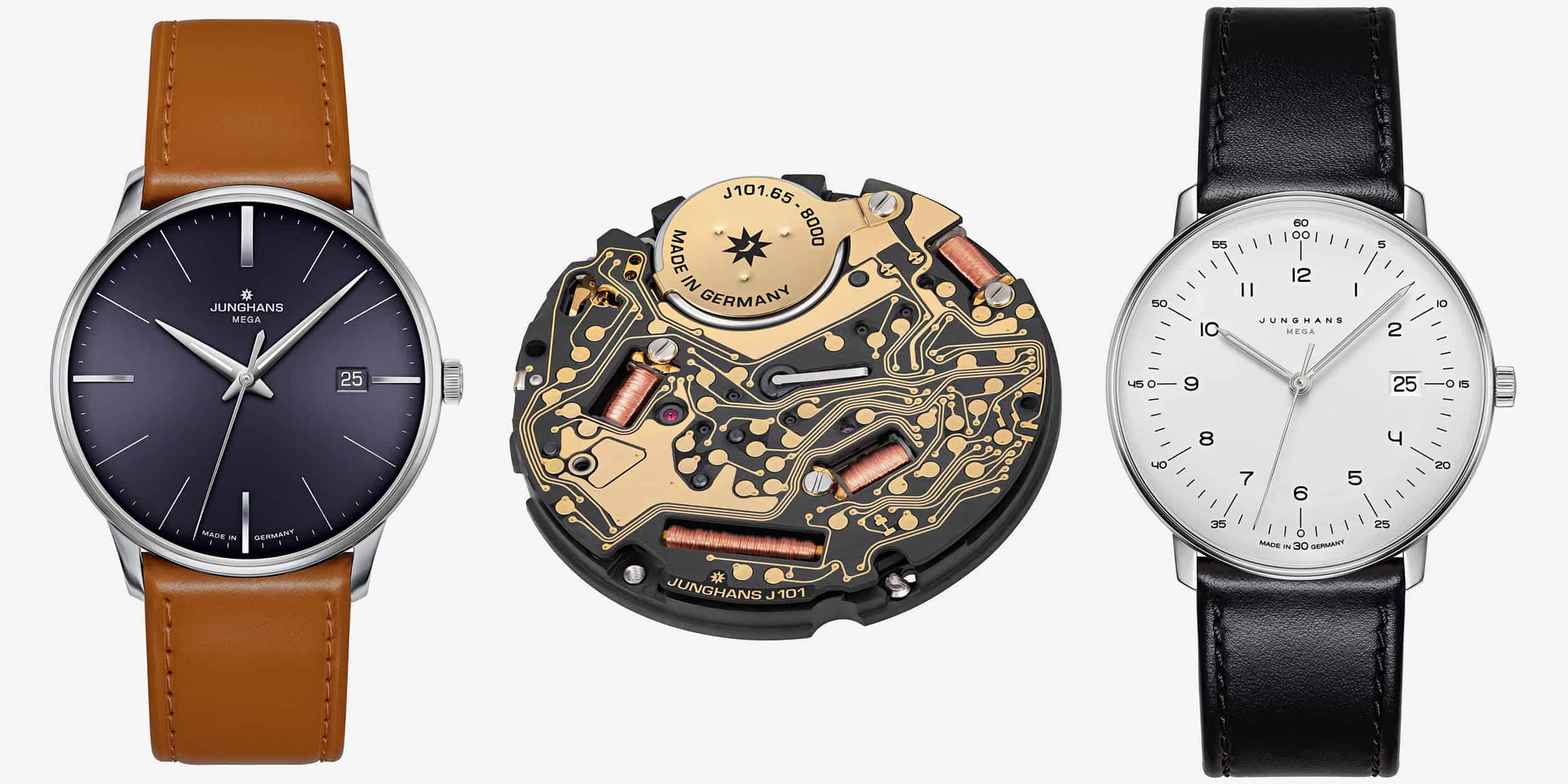Two of Junghans’ most celebrated watches, the mid-century Max Bill and the Meister, are now available with a radio controlled, battery powered movement called the J101.65. This movement provides astounding accuracy at +/- .02 seconds per year, as well as unique features like jumping hands, independent hour-hand setting (excellent for time-zone leaping), and a perpetual calendar that won’t require user input until the year 2,400. Unlike most quartz movements, the J101.65 is visually striking; its gold-on-black printed circuit board and exposed copper-wire coils shine like the jewels and gear trains in mechanical units; even the battery cover is handsomely signed. There are 146 individual components inside the J101.65.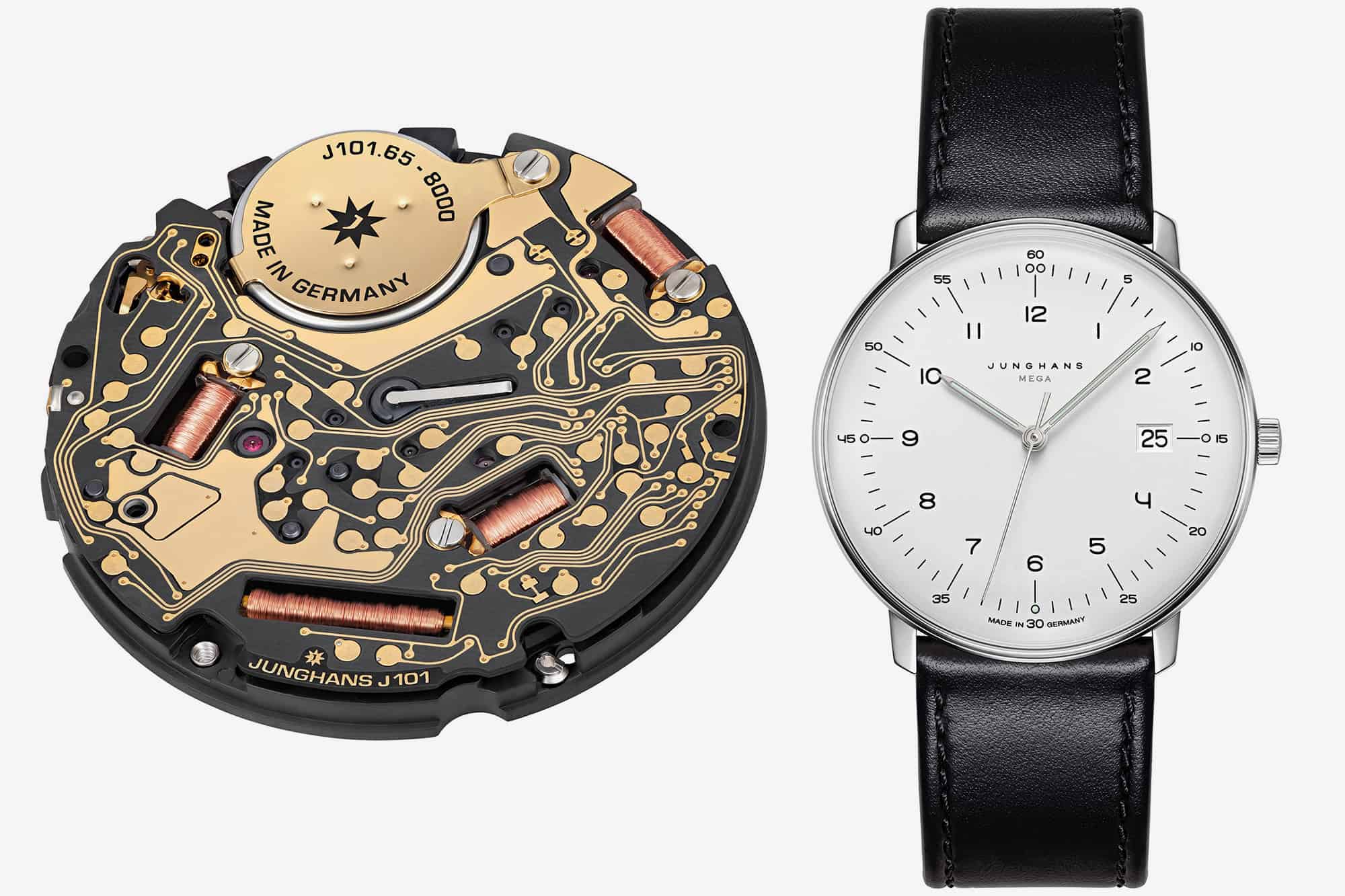 Movements that follow atomic clock radio signals have been around for a few decades, and they now inhabit even the cheapest, most flimsy of products—like the crappy-but-accurate $7 clock in my garage. Unlike those junky radio-controlled units, however, the J101.65’s own technological precision is able to fully capitalize on the accuracy of atomic timing signals, which themselves deviate just 6/1000ths of a second every million years. To appreciate how the J101.65 makes use of that seemingly impossible accuracy, we have to wend our way through some acronyms.
Movements that follow atomic clock radio signals have been around for a few decades, and they now inhabit even the cheapest, most flimsy of products—like the crappy-but-accurate $7 clock in my garage. Unlike those junky radio-controlled units, however, the J101.65’s own technological precision is able to fully capitalize on the accuracy of atomic timing signals, which themselves deviate just 6/1000ths of a second every million years. To appreciate how the J101.65 makes use of that seemingly impossible accuracy, we have to wend our way through some acronyms.
Atomic Accuracy Takes a Classic Turn with the Junghans Max Bill and Meister MEGA Collections
Advanced Moving Function (AMF)—This bit of tech controls the jumping of the hands and the date wheel, all which stay put until just a fraction of a second before jumping to their next position. To use Junghans’ language, this “keeps the hands accurate,” meaning that the hands never spend time pointing at the space between markers, and the date wheel never sits between days.
Smart Hand Motion (SHM)—This is a slightly fancy way of saying that the seconds-hand ticks every half-second. Ticking at half-second intervals may not seem like a big deal, but when you consider that the seconds-hand deviates just .02 seconds per year, then you may want to know about ITC.
Intelligent Time Correction (ITC)—Exactly 1,140 times a day, this clever circuit compares the position of the seconds-hand against the atomic radio signal, and if the seconds-hand is not aligned the ITC unit realigns it, thus achieving the claimed .02 seconds per year accuracy. Amazingly, the ITC circuit also checks the position of the minutes and hours hands once a day, as well as the date wheel once a month, making small physical corrections as needed.
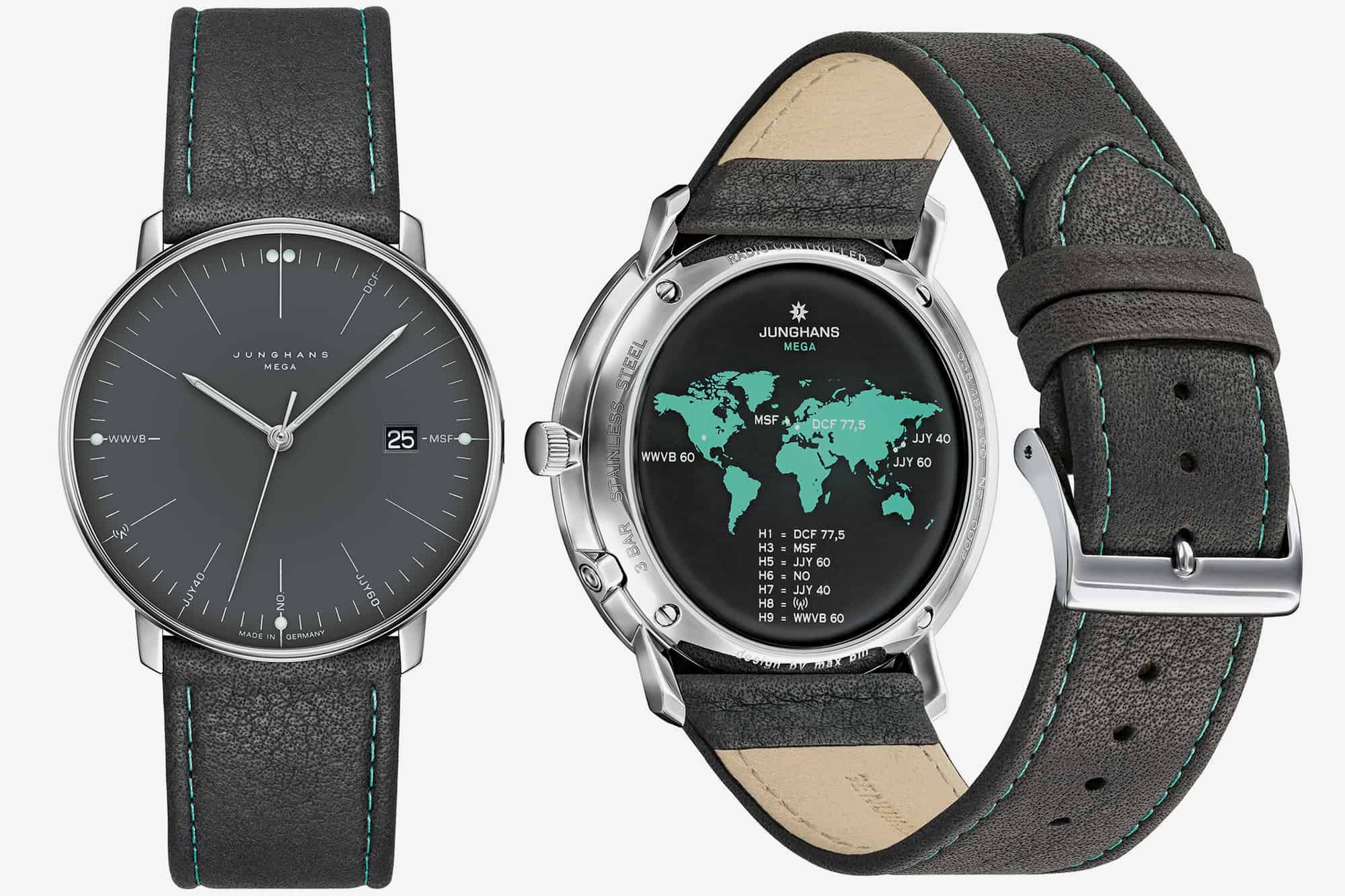 Quartz mode kicks in whenever atomic clock radio signals are not available. In quartz mode, accuracy falls to +/-8 seconds per year, yet all functions, including the perpetual calendar, keep going. So, for instance, if the J101.65 happens to be out of broadcast range at 11:59:59 PM on February 28th, 2096, the date will jump to display the leap year with a 29. Twenty-four hours later it will ring in March by displaying a 1.
Quartz mode kicks in whenever atomic clock radio signals are not available. In quartz mode, accuracy falls to +/-8 seconds per year, yet all functions, including the perpetual calendar, keep going. So, for instance, if the J101.65 happens to be out of broadcast range at 11:59:59 PM on February 28th, 2096, the date will jump to display the leap year with a 29. Twenty-four hours later it will ring in March by displaying a 1.
The J101.65 movement will do all of that without any input from its user other than setting the hours hand to the preferred time-zone via the crown. Effectively, then, the Max Bill and Meister MEGA watches provide smartphone clock convenience while deviating very little from the aesthetic of their mechanical counterparts. For those who wish to save and call up time-zone settings for their MEGA, Junghans is slated to release the MEGA App later this fall—the details of which are forthcoming.
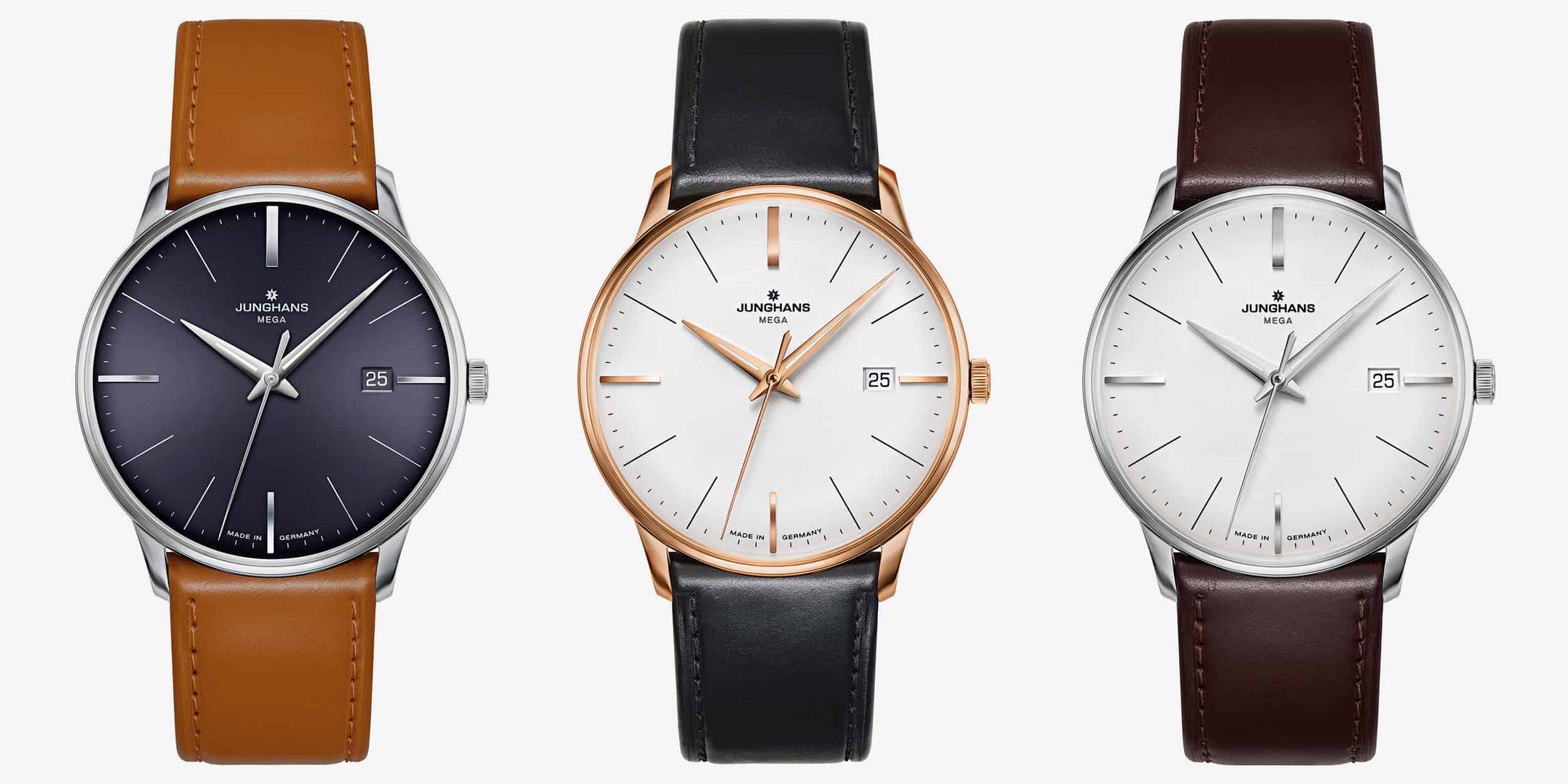 The broader Junghans Meister series includes a number of models, typically with complications and features at the top of the Junghans catalog. The Meister MEGA looks like the Meister Classic. At 38.4-millimeters across and just 8.9-millimeters thick (including the convex hardened plexiglass crystal), we see that the word “MEGA” does not refer to size. The Meister MEGA is available in several colorways, including a polished silver dial with a gold-plated case and indices, a silver dial in steel, a blue dial in steel, and an anthracite dial with a world map which notes the location of five major high-frequency atomic clock broadcast stations.
The broader Junghans Meister series includes a number of models, typically with complications and features at the top of the Junghans catalog. The Meister MEGA looks like the Meister Classic. At 38.4-millimeters across and just 8.9-millimeters thick (including the convex hardened plexiglass crystal), we see that the word “MEGA” does not refer to size. The Meister MEGA is available in several colorways, including a polished silver dial with a gold-plated case and indices, a silver dial in steel, a blue dial in steel, and an anthracite dial with a world map which notes the location of five major high-frequency atomic clock broadcast stations.
 The four Max Bill MEGA models don’t deviate too far from their mechanical counterparts. At just 9 millimeters thick, the Max Bill MEGA sheds one millimeter, but otherwise the 38-millimeter case will be familiar to fans of the Max Bill models. However, the case back features a metalized mineral crystal, but you can’t see through it; instead the rear crystal features a print of the world map with the five station locations and—not found on the Meister—a list of “reception instructions” for those stations. (Despite some dead-end googling, I still don’t know what those instructions mean exactly, but they certainly aren’t for us humans to obey.) Otherwise, the Max Bill MEGA is the same minimalist, form-follows-function, Bauhaus masterpiece that has made it a perennial hit.
The four Max Bill MEGA models don’t deviate too far from their mechanical counterparts. At just 9 millimeters thick, the Max Bill MEGA sheds one millimeter, but otherwise the 38-millimeter case will be familiar to fans of the Max Bill models. However, the case back features a metalized mineral crystal, but you can’t see through it; instead the rear crystal features a print of the world map with the five station locations and—not found on the Meister—a list of “reception instructions” for those stations. (Despite some dead-end googling, I still don’t know what those instructions mean exactly, but they certainly aren’t for us humans to obey.) Otherwise, the Max Bill MEGA is the same minimalist, form-follows-function, Bauhaus masterpiece that has made it a perennial hit.
There are four dial variants for the Max Bill MEGA, two with atomic clock stations listed discretely around them, two without.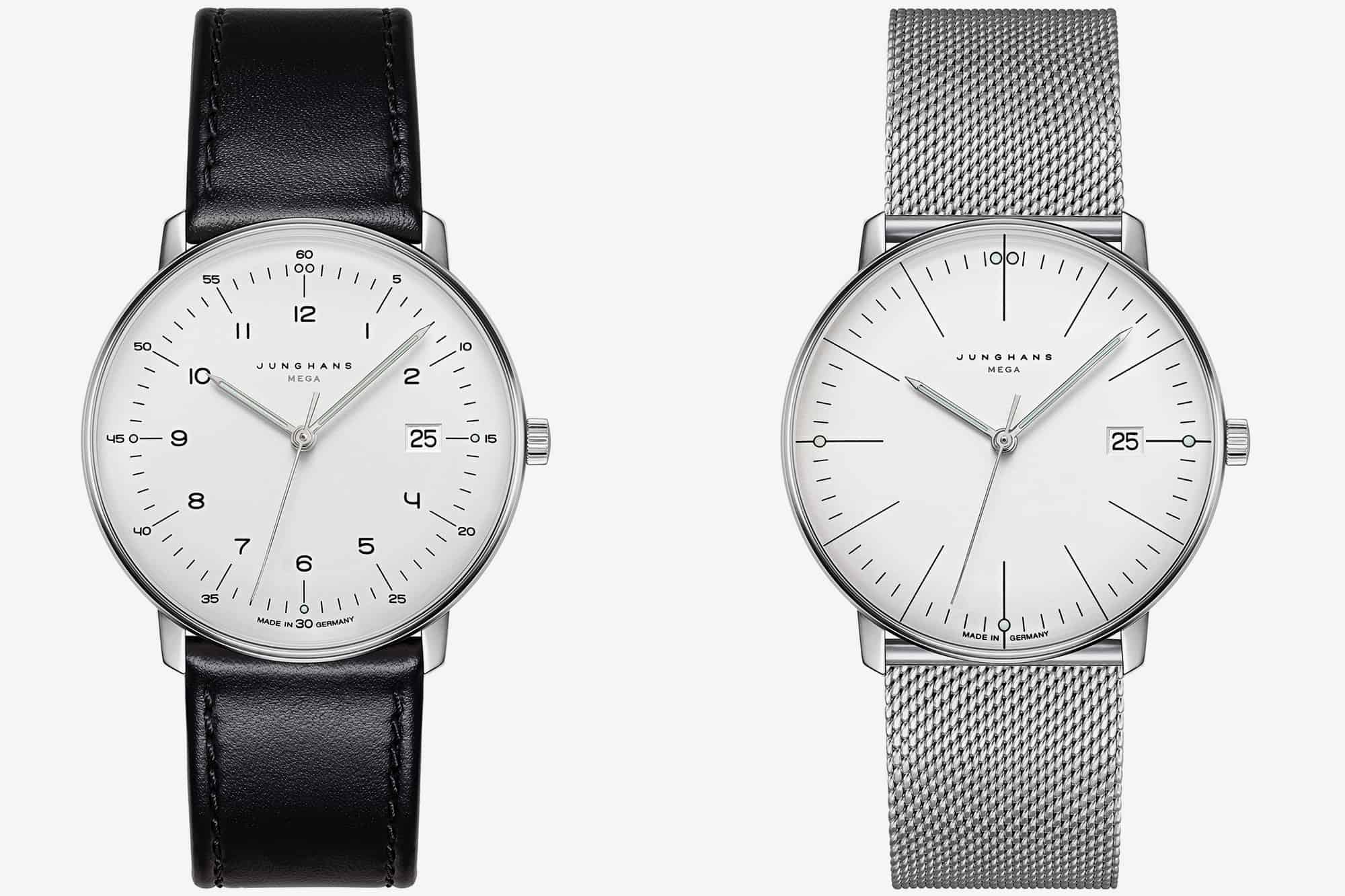
Ref. 058/4820.00 features a silver dial with an inner numerical track for the hours and an outer one for the seconds. This reference is nearly identical to the Max Bill Automatic and Quartz models. It ships on a black leather strap.
Ref. 058.4821.44 is indistinguishable from the non-numeric dial of the popular Max Bill Hand-Winding model. This variant is available with a polished silver dial on a Milanese mesh bracelet.
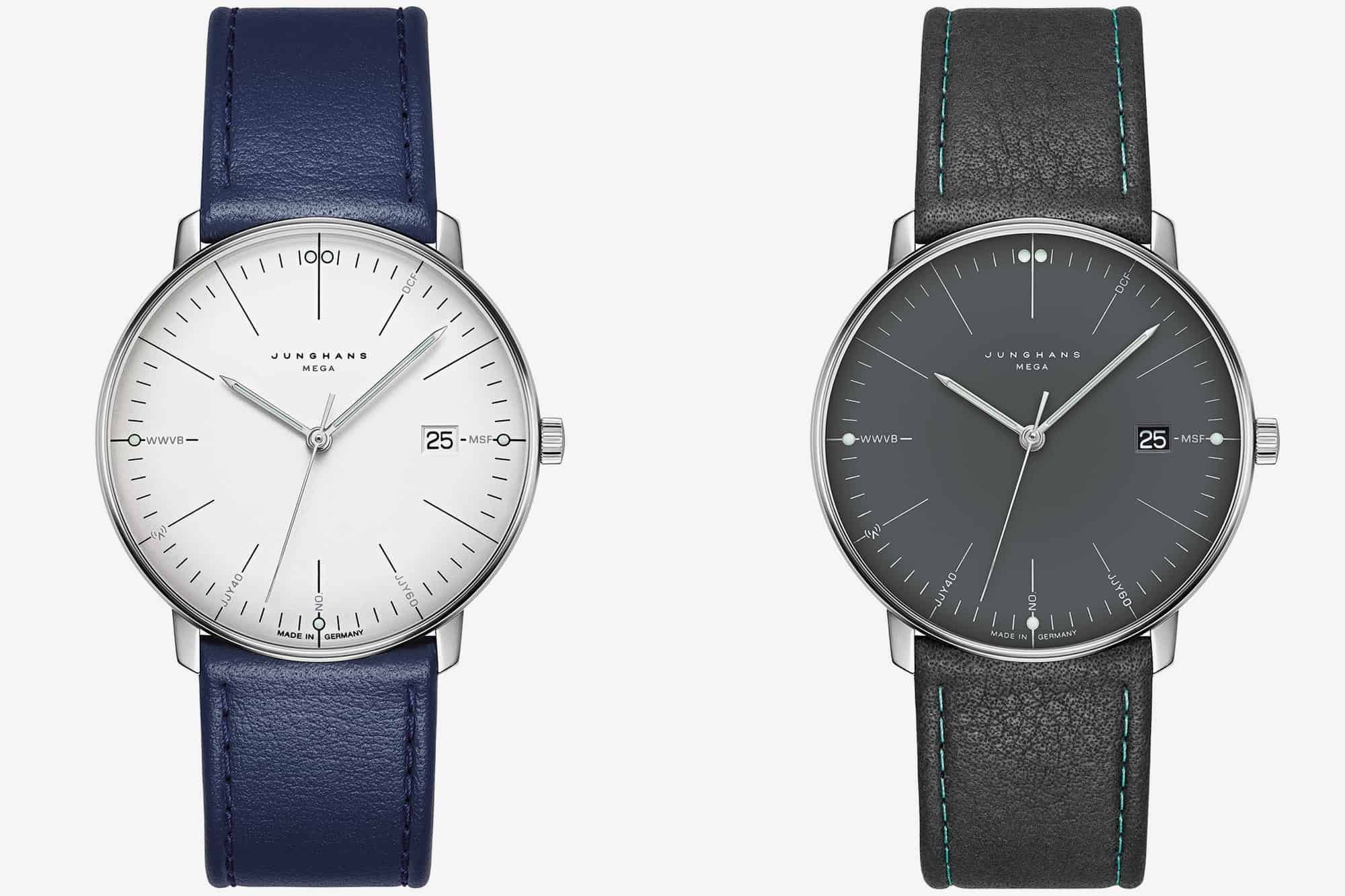 Ref. 058/4822.00 hosts a silver dial with the atomic stations around it, and this one comes on a blue leather strap.
Ref. 058/4822.00 hosts a silver dial with the atomic stations around it, and this one comes on a blue leather strap.
Ref. 058/4823.00 has a lovely anthracite dial with the atomic stations and ships on black leather.
For vintage and mechanical watch fans—many of whom have flocked to Junghans—it’s easy to dismiss quartz movements and atomic watches. But Junghans has enabled so much technology in the J101.65 movement that it seems to inhabit the same realm as other higher-end quartz calibers. In other words, the Junghans quartz movement is best thought of as an innovative, high-end machine that allows the Meister MEGA and Max Bill MEGA to provide robust world-traveling capabilities, incomparable accuracy, and hassle-free operation—all while maintaining the classic mid-century style that so many have come to adore.
Pricing is $795 for the Max Bill MEGA series and $1,290 for the Meister MEGA series. Junghans









 Featured Videos
Featured Videos




